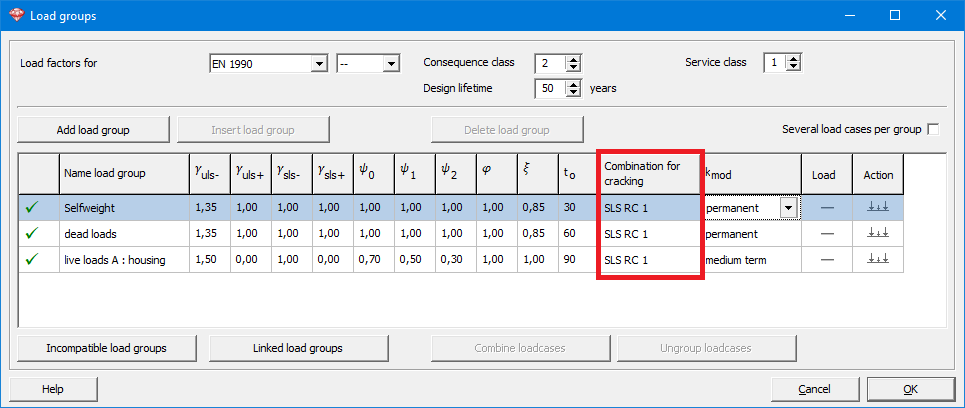Overview of the differences
If you would compare the cracked deflection ![]() to the cracked deflection
to the cracked deflection ![]() at time t = ∞, they’re not equal if you use default settings. This is why:
at time t = ∞, they’re not equal if you use default settings. This is why:
The deformation at time t = ∞ calculated with ![]() , is usally larger then the deformation at time t = ∞ calcualted with
, is usally larger then the deformation at time t = ∞ calcualted with ![]() .
.
How to obtain approximately the same result for both calculation methods
The settings for this ![]() calculation cannot be changed by the user, so will change the setting of this
calculation cannot be changed by the user, so will change the setting of this ![]() calculation so the results approach those of this
calculation so the results approach those of this ![]() calculation.
calculation.
- Remove all non-linearities from the model.
- Select SLS RC 1 (we cannot select and SLS RC enveloppe, so we select the next best thing: SLS RC 1) as the combination for cracking for all load groups
 .
.
- Add an additional combination (named ‘New combination in the image below’) to
 .
.
Make sure to set the factor Cc(t) to 1 for all load groups. Meaning that all load groups cause creep for the full 100%.
- Compare the cracked deformation of this new combination with the cracked deformation obtained with this
 calculation.
calculation.

